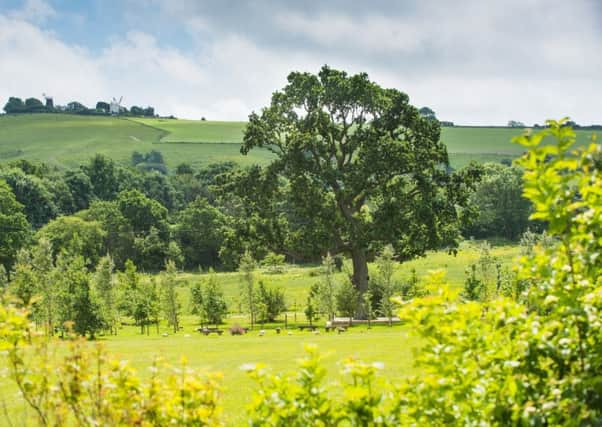Clayton Wood Natural Burial Ground becomes home for many new species


Great Crested Newts, a soprano pipistrelle bat and 122 species of plants have all been discovered at the South Downs National Park.
Opened more than ten years ago, Clayton Wood Natural Burial Ground has been working with a wildlife trust to ensure it makes a positive difference to the local environment.
Advertisement
Hide AdAdvertisement
Hide AdThe latest monitoring report of the West Sussex site recorded 122 species of plants across the site over the last two years.
After installing habitat homes for the wildlife, there was a special sighting of a soprano pipistrelle which was found within a bat box as well as nesting birds likely to be blue tits and great tits.
Teague Hampson from Clayton Wood Natural Burial Ground said: “Over the years, we have been working hard to fulfil our conservation management commitments at the site.
“The site’s biodiversity is extremely important to us and our colleagues take particular care to make sure it is protected.”
Advertisement
Hide AdAdvertisement
Hide AdThe natural burial ground has a mix of meadows, wooded glades, short mown paths, pond, and diverse boundary hedgerows.
The meadows, which have been left to grow, provide a habitat for invertebrates such as bees, and butterflies as well as cover and foraging habitat for small mammals.
Great Crested Newts, which are legally protected under both UK and European law, have also been found on site.
Teague added: “We realise we are incredibly fortunate to be set in 15 acres of countryside but we have learnt a lot by working alongside the Wildlife Trust and small actions can make a big difference.
Advertisement
Hide AdAdvertisement
Hide Ad“We hope other local businesses will join us and make a difference to our local community.”
They are one of three native species of newt found in the UK and currently under threat in both their aquatic and terrestrial habitats from a number of sources including agricultural intensification, poor management of ponds, disease and urban developments.
In 2018 during the peak breeding period in late spring, the newts were found in a channel leading into the pond with a peak count of six males and five females as well as eggs in the vegetation.
Sarah Jackson, senior ecologist at Arcadian Ecology, said: “Working with Clayton Wood Natural Burial Ground to develop a biodiversity plan has shown how every land manager can do their bit, and the importance of on-going monitoring and advice to ensure actions are having a positive effect for wildlife.
Advertisement
Hide AdAdvertisement
Hide Ad“If you own a business or look after some land, get in touch to find out how you can help nature.”
Looking ahead to 2019 and beyond, the team at Clayton Wood is developing plans to further improve the ecological status of this unique natural burial ground.
Clayton Wood has various dedicated areas for full natural burial and cremated remains, as well as memorial scattering lawns, surrounded by native trees for future generations to enjoy.
For more information visit: www.claytonwood.co.uk